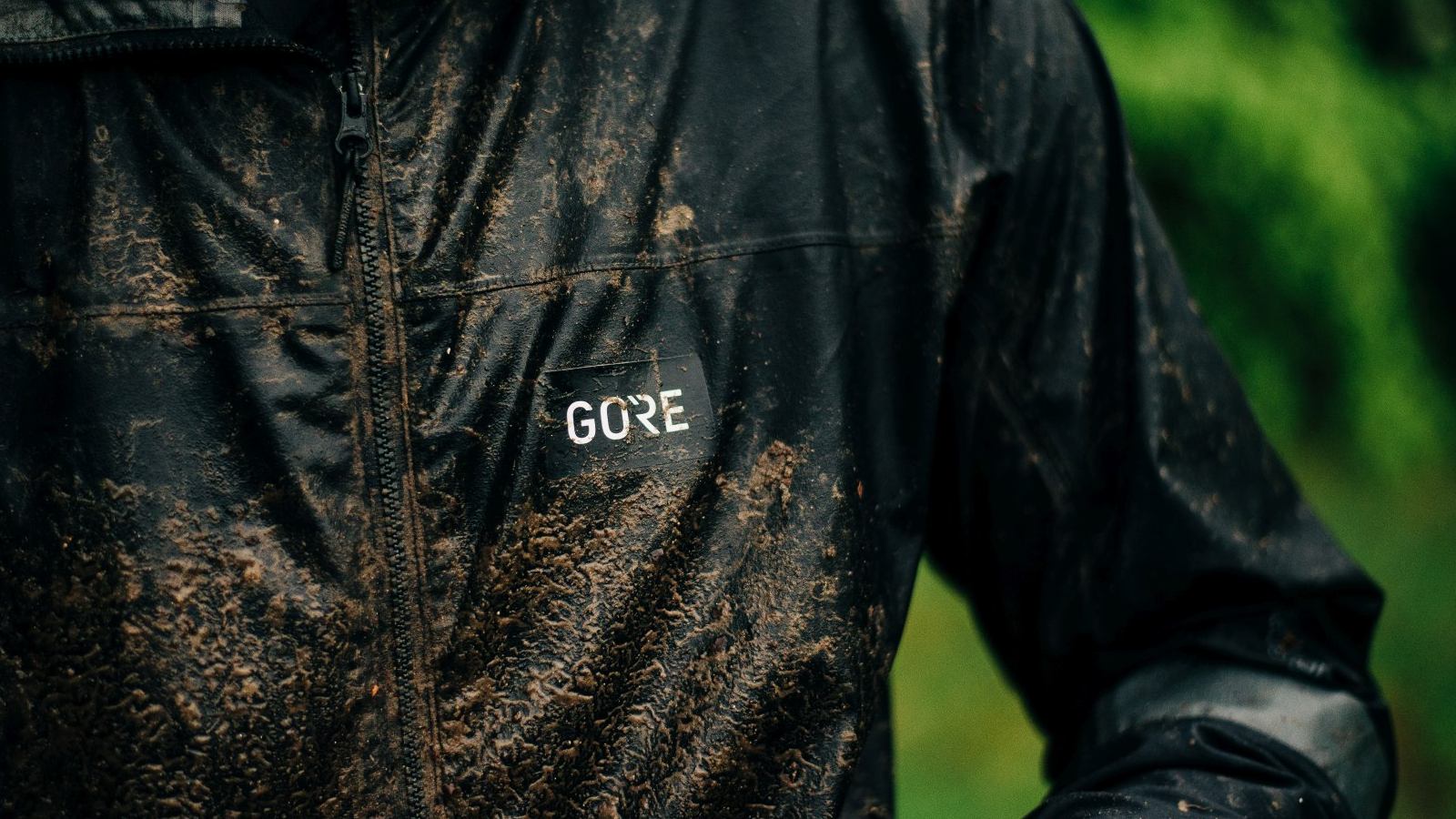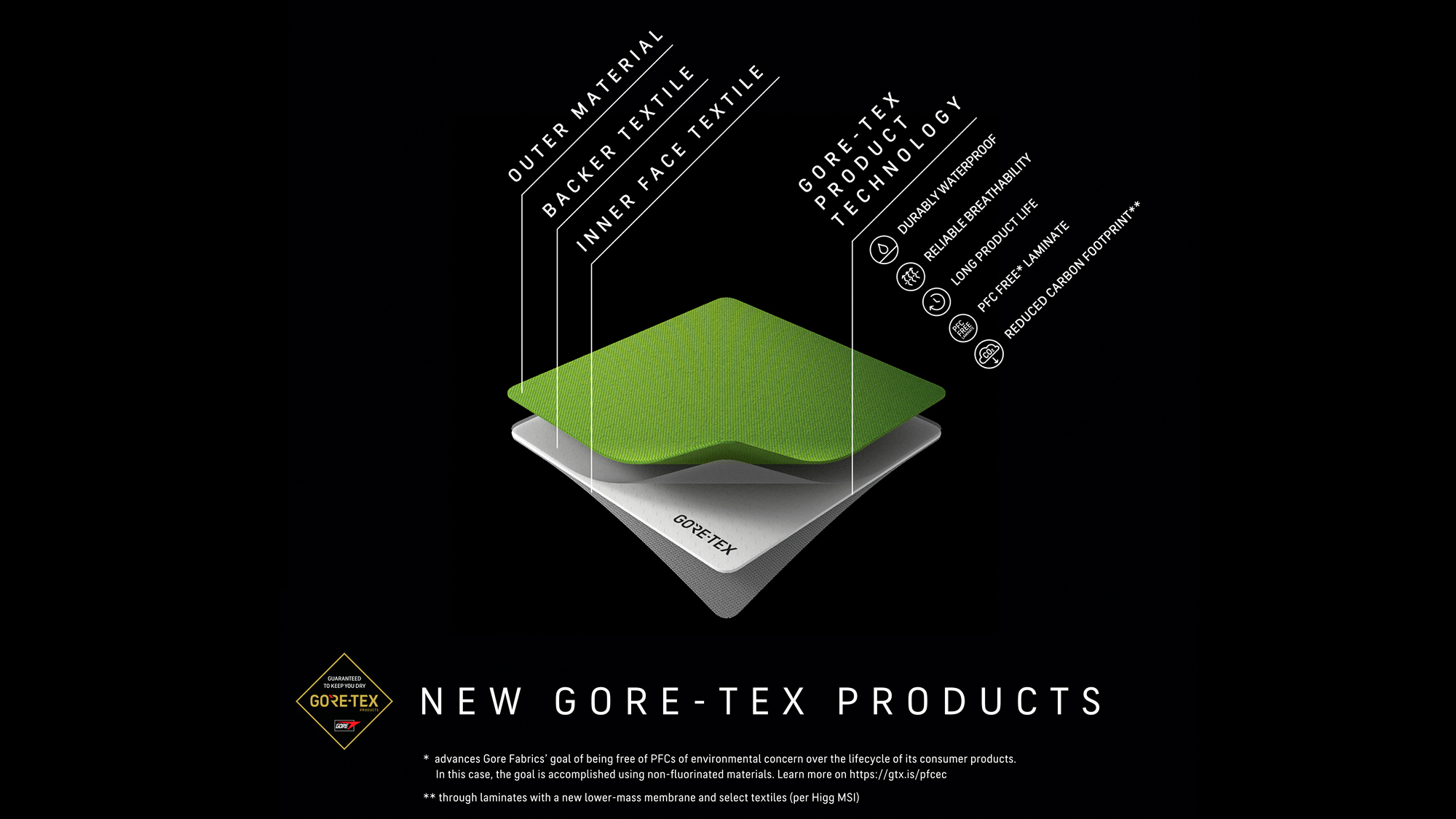Expect some big changes to waterproof MTB jackets in 2023
Looming PFC and PFA bans kill off Gore Shakedry and could have dramatic effects on the performance of outdoor clothing

When it was invented back in 1969, Gore-Tex was a massive step forward in waterproof outdoor gear. Over the last 50 or so years there has been continued development that has culminated in Gore’s Shakedry material which rewrote the book when it came to waterproofness, breathability, and low weight. While durability certainly isn’t its strong point, Shakedry quickly became the material of choice for many of the best MTB jackets.
That's all about to change, as PFAS/PFC bans are due to be enforced and outdoor brands seek to be more environmentally friendly to the very places their products are enjoyed there is likely to be a huge shift in the waterproof jacket market.

What are PFA/PFC’s and what is changing?
PFC (per and poly-fluorinated chemicals) and PFAS (per and poly-fluorinated alkyl substances) are loose terms that cover a wide range of per and poly-fluorinated chemicals. These chemicals are used across a huge range of products from non-stick pans to car tires, however, they have been shown to be extremely damaging to the environment, persisting far longer than any other manmade substance, and are due to be banned in the EU, which will take effect on January 1, 2025.
Gore themselves have identified specific PFCs of environmental concern, specifically those that are highly fluorinated and persistent when released into the environment. Not all of the identified PFCs of environmental concern are directly hazardous either, Gore has also included chemicals that have problematic manufacturing and disposal processes which have the potential to become widely dispersed in water.

How will these changes affect products?
The biggest shake-up is the discontinuation of Gore’s Shakedry fabric which has been unmatched when it comes to waterproofing and packability since it was brought to the market in 2016. The reason is that the membrane used for Shakedry contains PFOA (Perfluorooctanoic acid) chemicals, and Gore is dedicated to being PFOA-free by 2025.
The cessation of these PFCs of Environmental Concern isn’t going to affect all products though. Most of Gore’s fabrics use ePTFE (an expanded form of PTFE) to create a thin waterproof and breathable membrane. Gore states that this ePTFE is “inert, insoluble in water, extremely stable and not biodegradable. Therefore, it does not degrade to become a source of PFCs of Environmental Concern.” This is good news for many MTB brands that use fabrics like Gore-Tex Infinium in their products and should remain unaffected.
It's not just the membranes that are affected by these changes but also the DWR (Durable Water Repellency) treatments that are used on waterproof jackets which also use fluorinated polymer chemistry. Many brands have already moved to environmentally friendlier alternatives, although they may be lacking in performance and longevity.

What's next?
It appears brands have stockpiled the soon-to-be-banned fabrics, so for the time being Shakedry products will continue to be available. That is until stock runs out, so if you were thinking of investing in Shakedry, you'd best not hang about.
Gore are obviously working on future materials, announcing a new Gore-Tex ePE (expanded polyethylene) membrane at the tail end of last year. This new three-layer material is said to be lighter, stronger, and better for the environment as it uses non-fluorinated materials and recycled, solution, or undyed face materials. Gore will be seeking to at least match the performance achieved by its current products and will come with Gore’s "Guaranteed To Keep You Dry" promise. However, at the time of writing, there are no cycling products available in the new material so we are unable to speculate on its performance.
There is also a Gore-Tex Laminates with recycled 'Bionic' textile which is made from plastic waste partially collected from coastal environments. This two-layer material will also use the Gore-Tex ePE membrane and products using this new material are expected in the Autumn/Winter ‘23 season from Patagonia. Whether this will find its way into cycling clothing, only time will tell.
It must be noted that these materials are intended to live alongside existing ePTFE Gore fabrics, although it's expected that Gore’s end goal is to move all its products to more environmentally friendly solutions.
Other brands are already ahead of the curve and developing their own alternatives which are already available on the market. Both Castelli and POC have jackets with similar technology, although both these are aimed at the road riding markets.
Shakedry wasn’t exactly cheap, so it's probably safe to speculate that any future alternative is going to be just as expensive, if not more so, as brands cover the development costs of bringing completely new products to market.
All we can say for sure is that the forecast for waterproof jackets looks extremely changeable for the next couple of years.

Graham Cottingham joined the BikePerfect team as our senior tech writer in 2020. With over 20 years of riding experience, he has dabbled in downhill, enduro, and gravel racing. Not afraid of a challenge, Graham has embraced bikepacking over the last few years and likes nothing more than strapping some bags to his bike and covering big miles to explore Scotland's wildernesses. When he isn’t shredding the gnar in the Tweed Valley, sleeping in bushes, or tinkering with bikes, he is writing tech reviews for BikePerfect.
Rides: Cotic SolarisMax, Stooge MK4, 24 Bicycles Le Toy 3, Surly Steamroller
Height: 177cm
Weight: 71kg
